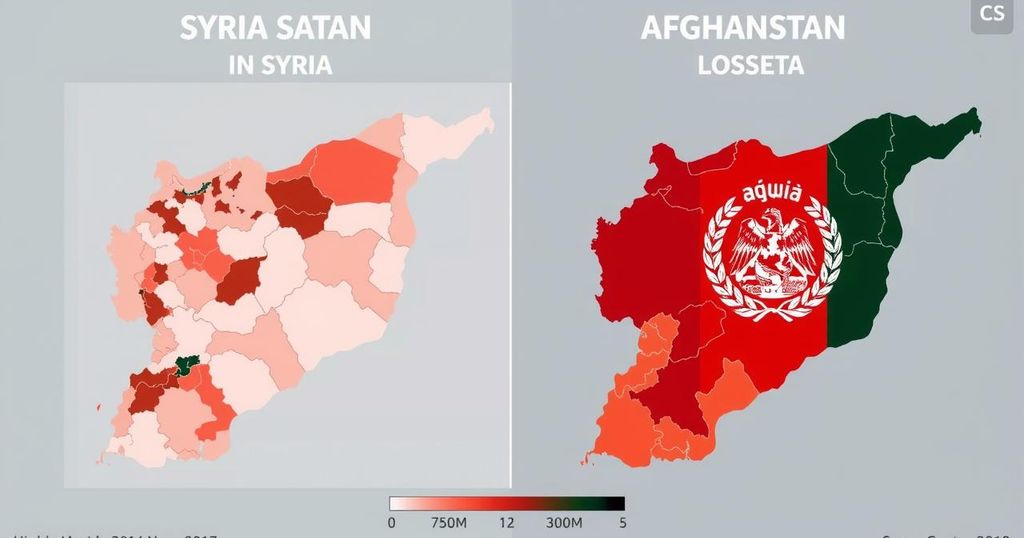Who Lost More Weapons: Russia in Syria or America in Afghanistan?
The article compares the military equipment losses of Russia in Syria to those of the United States in Afghanistan. Both countries faced significant arms losses following the collapses of their client states. The types of equipment lost differ, with Russia’s situation being more dire due to ongoing conflicts. Ultimately, the implications of these losses on future military capabilities are explored.
Following the collapse of Syria, a situation reminiscent of Afghanistan’s recent past, a significant amount of military equipment has been left behind by both patrons. As the victorious Hayat Tahrir al-Sham (HTS) rebels celebrate their entry into the capital, it remains uncertain how much of President Assad’s arsenal has survived, especially after recent Israeli airstrikes aimed at dismantling substantial military stockpiles. These developments echo a broader narrative regarding the disintegration of client states and the subsequent loss of weaponry by global powers.
Historically, Syria’s arms relationship with Russia dates back to the Soviet era, during which an extensive number of military assets were supplied, contributing to the Syrian Arab Army’s significant capabilities. As the Syrian civil war evolved, the casualties suffered by the Assad regime’s military forces have been profound, with extensive losses recorded in various combat operations. Recently, it has been documented that HTS captured numerous assets, although their haul may have been impacted by Israeli military operations targeting Syrian military resources.
In contrast, the U.S. withdrawal from Afghanistan led to the Taliban acquiring an estimated $7 billion worth of military supplies. Reports suggest that the Taliban has gained access to a sizable inventory of U.S.-provided military aircraft and vehicles, establishing an air force of their own. However, the composition and effectiveness of these armaments are arguably inferior compared to the capabilities inherited by HTS in Syria.
While both Russia and the United States have experienced significant losses due to the fall of their client states, the implications of these losses diverge considerably. Russia, amidst its ongoing conflict in Ukraine, finds itself in critical need of military resources, while the United States left behind less effective equipment, rendering it of limited utility for the Taliban in credible international conflicts.
The article discusses the substantial losses of military equipment experienced by both Russia in Syria and the United States in Afghanistan following the collapse of their respective client states. It provides a comparative analysis of the arms left behind, the historical context of military support provided to these nations, and the implications of these losses in the current geopolitical landscape. By focusing on recent military engagements and the aftermath of patron withdrawals, the nuances of each country’s arms loss are highlighted, giving insights into their potential future impacts.
In conclusion, the losses experienced by Russia following the collapse of Assad’s regime in Syria appear more significant when compared to the losses sustained by the United States in Afghanistan. The type and capability of the weaponry left behind by each patron differ greatly, with Russia potentially facing a greater challenge in replenishing its military assets amidst its ongoing conflict in Ukraine. In contrast, the equipment left in Afghanistan holds lesser strategic value for the Taliban under current circumstances.
Original Source: foreignpolicy.com




Post Comment